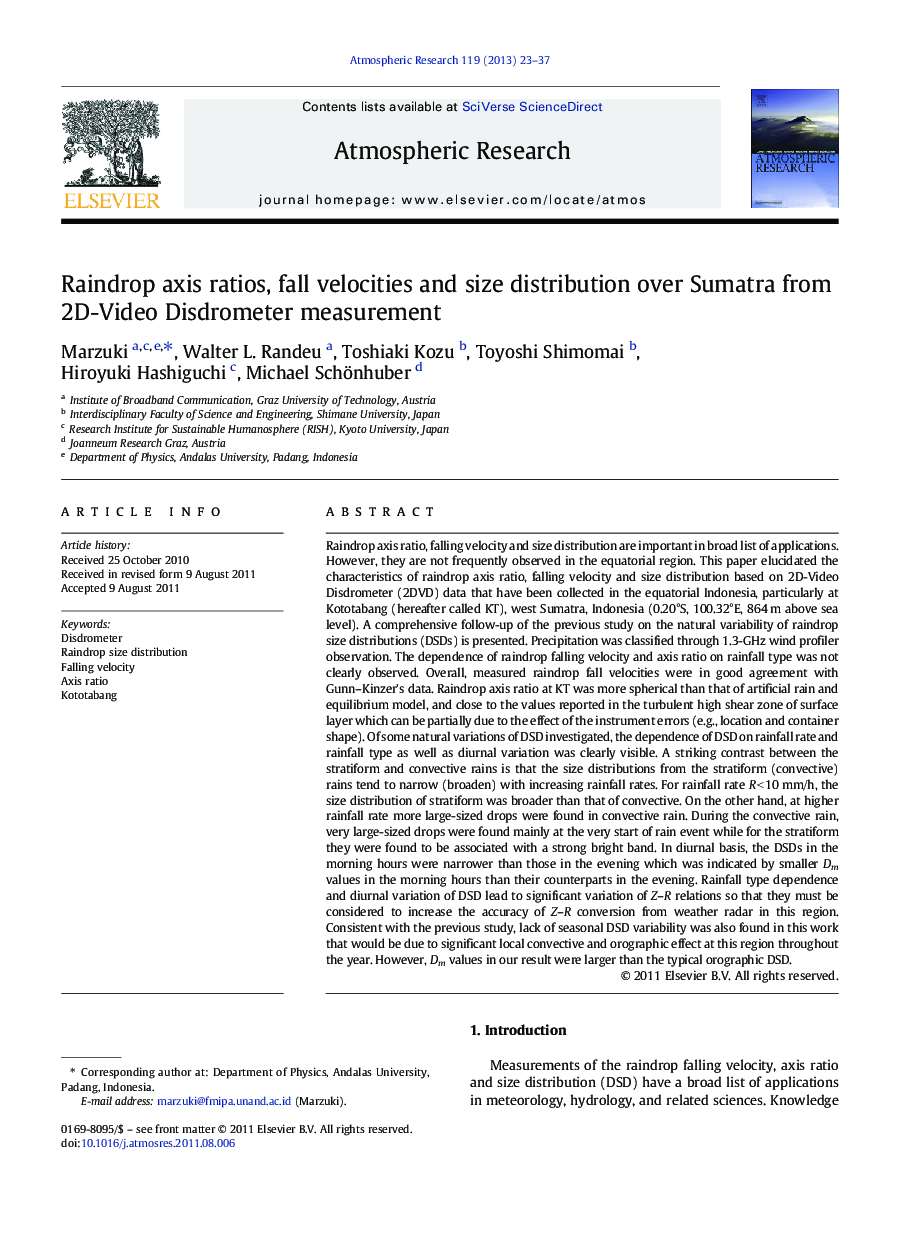| کد مقاله | کد نشریه | سال انتشار | مقاله انگلیسی | نسخه تمام متن |
|---|---|---|---|---|
| 4450155 | 1620546 | 2013 | 15 صفحه PDF | دانلود رایگان |

Raindrop axis ratio, falling velocity and size distribution are important in broad list of applications. However, they are not frequently observed in the equatorial region. This paper elucidated the characteristics of raindrop axis ratio, falling velocity and size distribution based on 2D-Video Disdrometer (2DVD) data that have been collected in the equatorial Indonesia, particularly at Kototabang (hereafter called KT), west Sumatra, Indonesia (0.20°S, 100.32°E, 864 m above sea level). A comprehensive follow-up of the previous study on the natural variability of raindrop size distributions (DSDs) is presented. Precipitation was classified through 1.3-GHz wind profiler observation. The dependence of raindrop falling velocity and axis ratio on rainfall type was not clearly observed. Overall, measured raindrop fall velocities were in good agreement with Gunn–Kinzer's data. Raindrop axis ratio at KT was more spherical than that of artificial rain and equilibrium model, and close to the values reported in the turbulent high shear zone of surface layer which can be partially due to the effect of the instrument errors (e.g., location and container shape). Of some natural variations of DSD investigated, the dependence of DSD on rainfall rate and rainfall type as well as diurnal variation was clearly visible. A striking contrast between the stratiform and convective rains is that the size distributions from the stratiform (convective) rains tend to narrow (broaden) with increasing rainfall rates. For rainfall rate R < 10 mm/h, the size distribution of stratiform was broader than that of convective. On the other hand, at higher rainfall rate more large-sized drops were found in convective rain. During the convective rain, very large-sized drops were found mainly at the very start of rain event while for the stratiform they were found to be associated with a strong bright band. In diurnal basis, the DSDs in the morning hours were narrower than those in the evening which was indicated by smaller Dm values in the morning hours than their counterparts in the evening. Rainfall type dependence and diurnal variation of DSD lead to significant variation of Z–R relations so that they must be considered to increase the accuracy of Z–R conversion from weather radar in this region. Consistent with the previous study, lack of seasonal DSD variability was also found in this work that would be due to significant local convective and orographic effect at this region throughout the year. However, Dm values in our result were larger than the typical orographic DSD.
► Raindrop velocity and axis ratio are not significantly dependent on rainfall type.
► Raindrop at KT is more spherical than that of artificial rain and equilibrium model
► Some natural variations of DSD lead to variation of Z–R relations.
► The variations of DSD should be kept in mind when converting Z from weather radar.
► Seasonal variation of DSD is not clearly visible.
Journal: Atmospheric Research - Volume 119, January 2013, Pages 23–37